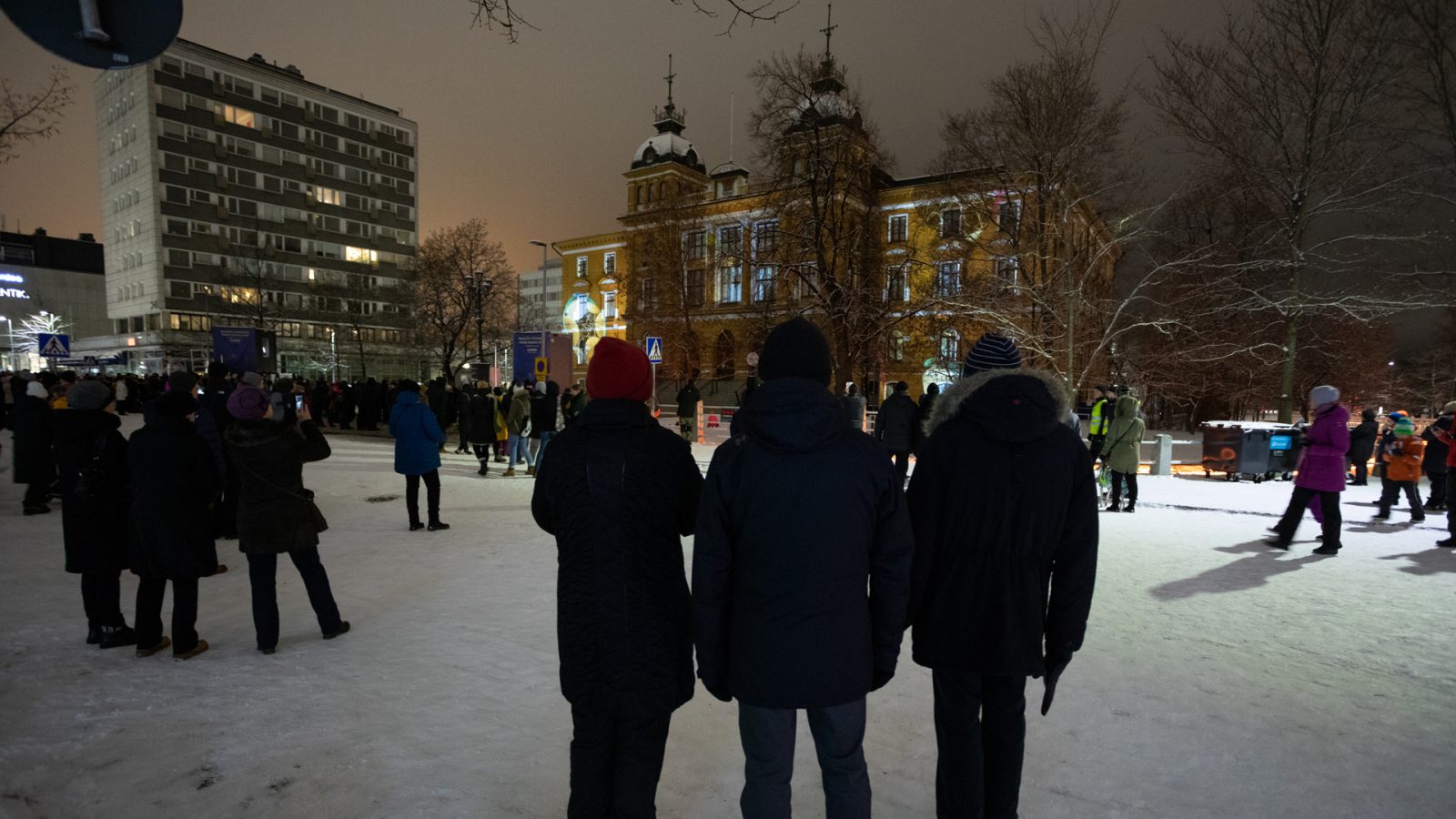The three-day Lumo Light Festival in Oulu has a carbon footprint of 10,300 kg CO2e, which is equivalent to the annual carbon emissions of one Finnish person. The majority of emissions, accounting for 70% of the festival’s total carbon footprint, come from the travel of the light artists and their installations. Macon Oy calculated the festival’s carbon footprint for the year 2021. In 2022, they plan to include information about the travel of festival attendees in their calculations through a survey.
Like other events, the primary source of emissions for the Lumo Light Festival is transportation, involving the movement of people and materials from one place to another. The festival brings artists and their installations from abroad, resulting in over 7,300 kg CO2e of carbon dioxide emissions in 2021. The calculations have not yet taken into account the travel of festival attendees.
“Focusing on the modes of transportation for artists and installations and providing offsetting opportunities is the next step. In the future, we will also ask the audience about their means of travel. In our communication, we encourage people to come to the event by walking, cycling, or taking the bus, as this can have an impact on emissions,” reflects Jarkko Halunen, the program director of Lumo Light Festival.
Another surprising source of emissions was advertising and printed materials. Marketing and signage accounted for 23% of the total emissions.
Contrary to the current energy crisis, the energy consumption of light festivals, which has been questioned, appears to be lower than expected. Although Lumo is a light festival, its carbon footprint from electricity, heating, and fuel usage is small, less than 5% overall. The festival primarily utilizes carbon-neutral electricity. “Furthermore, the general lighting in the city has been reduced during the display of the light installations. This also levels out the consumption if people remember to turn off all the lights at home when they go to Lumo,” adds Halunen.
The emissions of Lumo cannot be directly compared to other light festivals as their carbon footprint calculations are not known. However, considering the number of visitors to the light festival, its emissions are moderate, especially due to the use of green electricity and the location facilitating the use of public transportation, according to Sanna Taskila, the expert who conducted the calculations.
Carbon footprints are also calculated for event venues. The carbon footprint calculation conducted for the Lumo Light Festival is the first of its kind for events in Northern Ostrobothnia and was carried out as part of the European Capital of Culture project. Macon Oy also calculates emissions for other music festivals in Oulu such as Qstock and Varjo, the Frozen People winter event, the gaming event Vectorama, as well as the NUTS trail running event and the Solstice techno festival held in Kuusamo.
Since the environmental impact of many events depends on the emissions from the event venues and operational practices, the calculations now also include the emissions of the event locations. In 2023, emissions will be calculated for Ouluhalli, Kuusisaari Event Park, the Restaurant Quarter, and Kokardi Club, among others.
Calculating the carbon footprint helps organizations understand the sources of emissions and how to make their operations more environmentally sustainable. The event organizers involved in the calculations receive tailored roadmaps and guidelines to help reduce emissions in the coming years.
For more information:
Jarkko Halunen, Program Director, Lumo Light Festival, jarkko.halunen@ouka.fi, 0447038274
Sanna Taskila, Senior Specialist, Macon Oy, sanna.taskila@macon.fi, 0400871294
Taina Ronkainen, Project manager, Europe’s most sustainable capital of culture project, taina.ronkainen@ouka.fi, 0406211249

